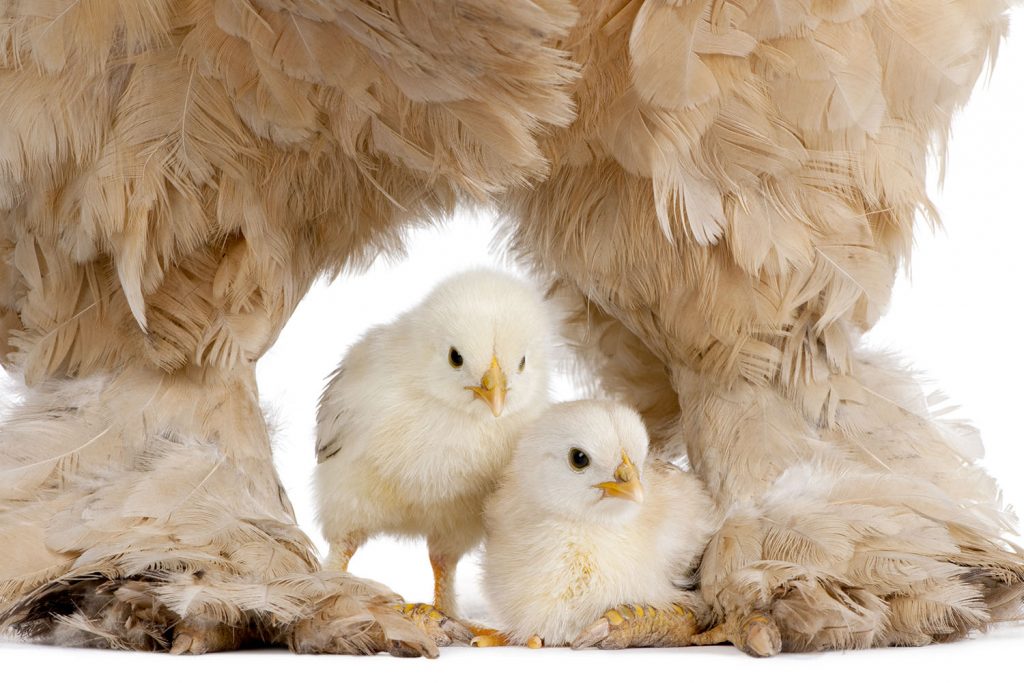IN OTHER LANGUAGES

Breeding hens are at risk of chronic mycotoxicosis, as they are birds with a long lifespan and are continuously exposed to mycotoxins through feed. Nowadays, outbreaks of mycotoxicosis caused by high doses are rare. However, low mycotoxin doses, which often go undetected, are the cause of a reduction of productivity and a higher susceptibility to disease, especially when the birds are affected by other stress factors.
Mycotoxicosis in breeding hens is an important economic problem due to the losses caused by the reductions in fertility and hatchability and by the worsening of the quality of day-one-chicks.
Mycotoxins exert toxic effects mainly on the digestive and immune system, and on egg production, egg quality and skeletal health.
Mycotoxins (trichothecenes, fumonisins, aflatoxins) harm the digestive tissues, worsen feed conversion and put the birds at risk of digestive diseases like watery feces, feed passage, and necrotic enteritis.
Aflatoxins, trichothecenes and ochratoxin, at levels that do not cause signs of mycotoxicosis, suppress immune functions, decreasing resistance to infectious diseases, and causing vaccination failures.
The quality of the egg is important to protect the progeny: thin and fragile shells, as well as a low content of nutrients, increase embryonic mortality, lower embryonic weight gain, and decrease hatchability.
Deoxynivalenol, T2 toxin, fumonisins and aflatoxins are the main mycotoxins affecting egg quality and skeletal health.
Mycotoxins interfere with the absorption and metabolism of calcium and vitamin D, leading to weak eggshells and fragile bones. Mycotoxins also produce liver damage, affecting the metabolism of certain nutrients and decreasing the synthesis of proteins, which results in a further reduction of the internal and external quality of the egg.
When breeders are affected by chronic mycotoxicosis, chicks are born with an impaired immune function, fragile bones, and the absorption of the vitellus is slower.
Moreover, ochratoxin and aflatoxins can be transferred into the egg, increasing mortality in embryos and young chicks.
The best approach to manage mycotoxin risk is to implement an integrated strategy that includes good storing practices of the feedstuffs, frequent mycotoxin analysis, and evaluation, as well as the regular use of a mycotoxin binder.
We at PlusVet Animal Health help breeder farms to set up a mycotoxin risk management program and to evaluate the risk posed by mycotoxin in their feedstuffs.
PlusBind© is a mixture of carefully selected silicates intended for the prevention of diseases and productivity losses related to the presence of all types of mycotoxins. It is indicated in poultry, pigs, aquaculture and ruminants.
The silicates present in PlusBind© have a highly expandable molecular structure. This characteristic gives the product a wide surface available for the adsorption of mycotoxins and therefore allows a high effectiveness at lower doses (0.5-1 kg per ton of feed).
PlusBind Bio© is a mixture of carefully selected silicates intended for the prevention of diseases and productivity losses related to the presence of all types of mycotoxins. It also contains plant extracts with prebiotic effect.
It is indicated in poultry, pigs and aquaculture.
The silicates present in PlusBind Bio© have a highly expandable molecular structure. This characteristic gives the product a wide surface available for the adsorption of mycotoxins and therefore allows a high effectiveness at lower doses (0.5-1 kg per ton of feed).

Certain health statements may not be applicable in your region.